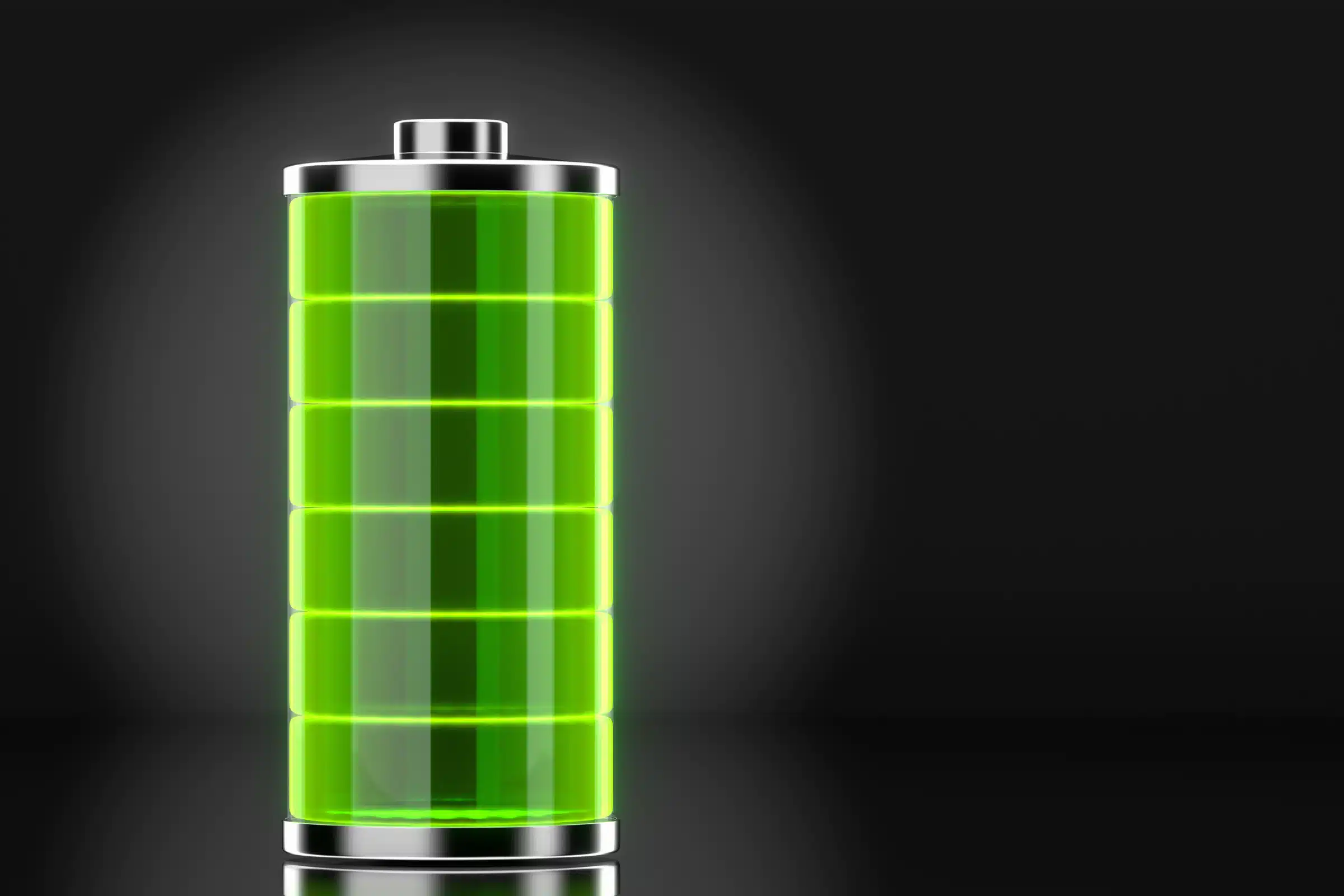
We’ve all been there—your laptop’s battery drains just when you need it the most, whether it’s during an important meeting, a crucial project deadline, or a last-minute assignment. It’s frustrating, and you’re not alone. While it’s normal for lithium-ion batteries to lose capacity over time, there are some simple yet effective strategies you can implement to extend their life and get the most out of your device. I’ve personally tested these proven tips, and I’m excited to share them with you. Read on to discover simple ways to boost your laptop’s battery performance!
At Glance:
Enhance Battery Usage and Optimize Performance Management Settings
First, start by adjusting the power settings. Windows laptops have built-in power management that you can use to adjust performance and usage depending on the task you are doing. This is a simple yet impactful way to improve battery life. Windows offers power management tools that allow you to control how much energy your device uses depending on your needs. Whether you’re aiming for top performance or trying to squeeze out extra hours for on-the-go use, these settings provide flexibility without additional software.
Windows 10:

To manage power settings on Windows 10, look at the taskbar located at the bottom right of your screen. Click on the battery icon, which will open the power management tool. From there, you can adjust the power settings according to the task you are performing.
Windows 11:

In Windows 11, managing power settings is straightforward. Go to Settings > System > Power & Battery > Power Mode to access your options. Here, you’ll find various modes tailored to balance performance and battery efficiency based on your needs. Each mode offers a distinct approach to power usage, allowing you to easily select the one that best suits your current task, whether maximizing performance or conserving battery life.
Choosing the right power mode:
- Best Performance: Ideal for demanding tasks like gaming or heavy multitasking, this mode offers maximum speed but drains your battery faster.
- Better Performance: Limits background activities a bit to save some power while still maintaining good performance—a balanced option for everyday use.
- Better Battery (Recommended): Designed to extend battery life without a big drop in performance, this mode is often the best for general use.
- Battery Saver: Reduces brightness, pauses background updates, and restricts app activity—perfect when you’re on the go and need to stretch your battery.
Turn Off Startup/Unused Background Apps and Processes
Some people don’t realize that background apps and software start running on their system the moment they press the power button and boot up Windows, even before they open any applications. These apps don’t just consume a lot of system resources; they also affect the battery usage of the laptop. Therefore, it’s important to turn off any applications running in the background.
Windows 10:
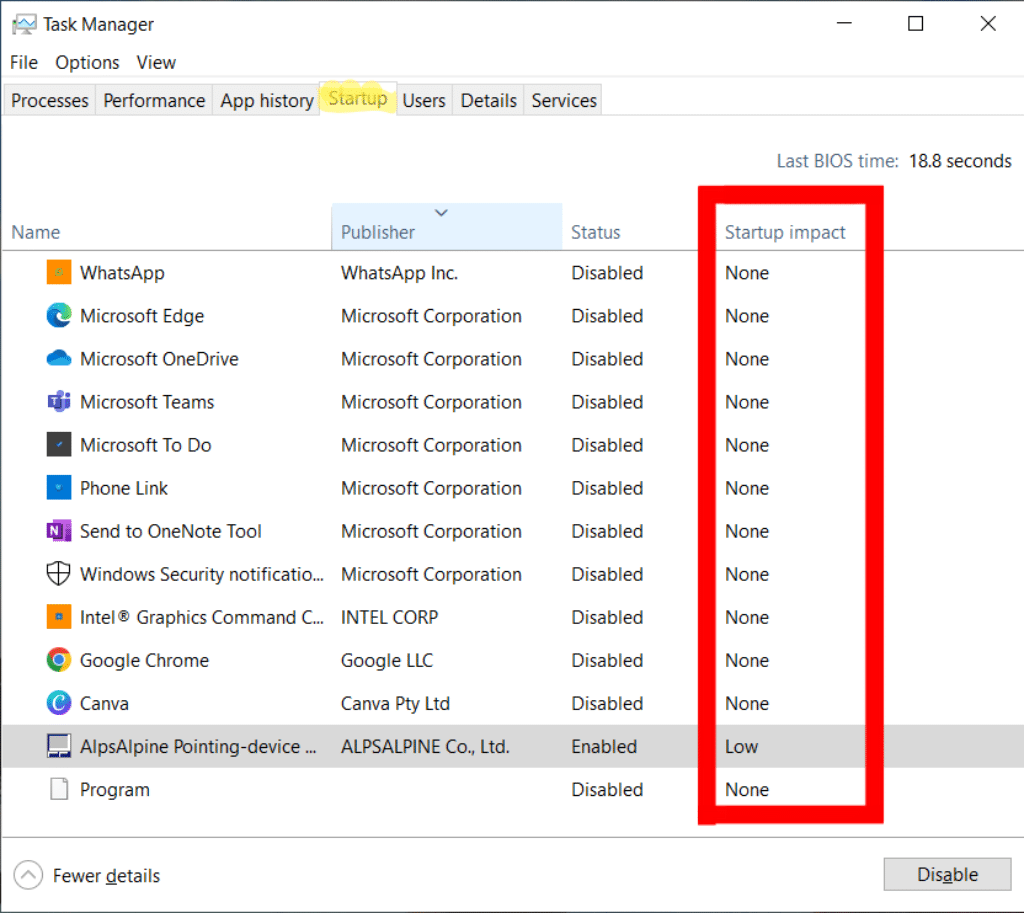
To turn off unused background apps on Windows 10, start by opening Task Manager. You can do this by right-clicking the taskbar and selecting “Task Manager,” or by pressing Ctrl + Shift + Esc. Once open, click on the Startup tab to view applications that run automatically when your computer starts. Focus on apps that have a high impact on system performance. For any unnecessary apps, right-click and select Disable to prevent them from running in the background. After disabling these apps, close Task Manager. This simple action helps free up system resources and improve your laptop’s battery life.
Windows 11:
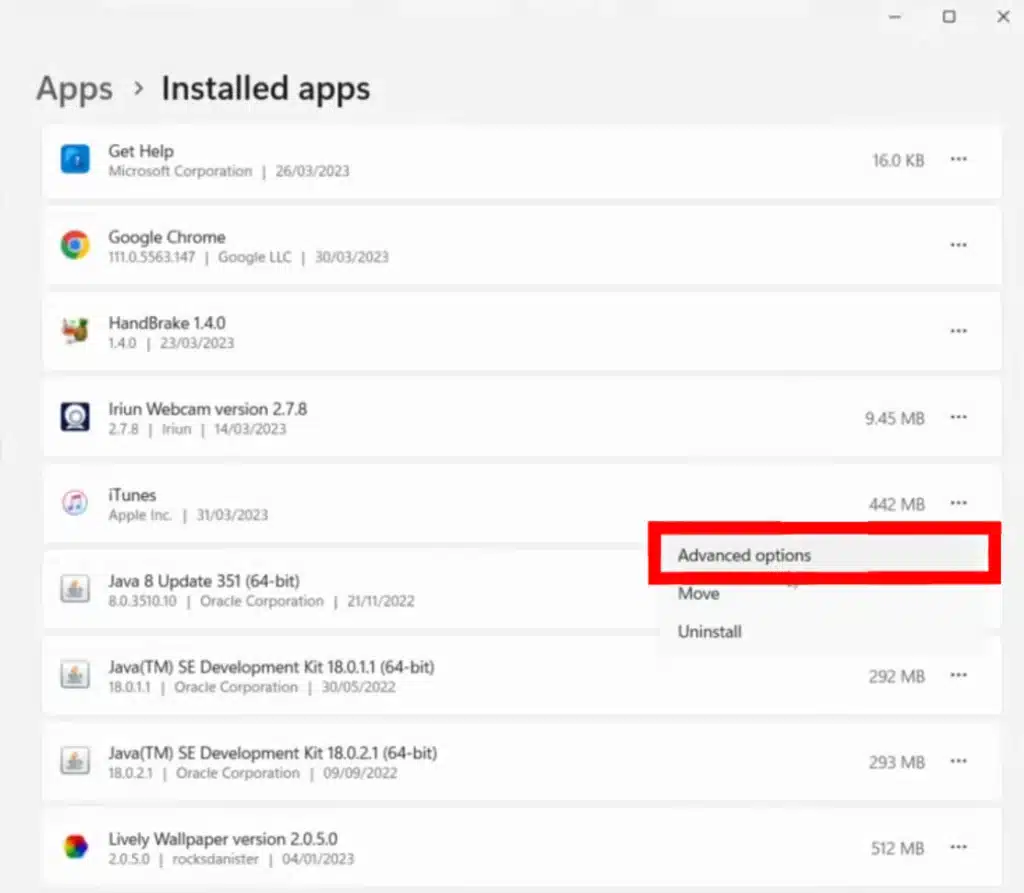
To turn off unused background apps in Windows 11, start by opening the Settings app by clicking the Start button and selecting the gear icon or by pressing Windows + I. Then, click on Apps in the left sidebar and select Apps & features. Find the app you want to manage, click on the three dots next to its name, and select Advanced options. In the Background apps permissions section, choose whether the app runs in the background by setting it to Never or When the app is in use. Disabling unnecessary background apps helps free up system resources and improve your laptop’s battery life.
Optimize Graphics Settings for Extended Battery Life
If your laptop has a dedicated graphics processor (GPU), it can consume considerable power, even when performing simple, day-to-day tasks where high graphics performance isn’t required. This unnecessary power drain from the GPU can significantly shorten battery life. To avoid this, you can adjust your graphics settings so that only intensive applications, like games or design software, use the GPU, while everyday apps rely on the more power-efficient integrated graphics.
Windows 10:
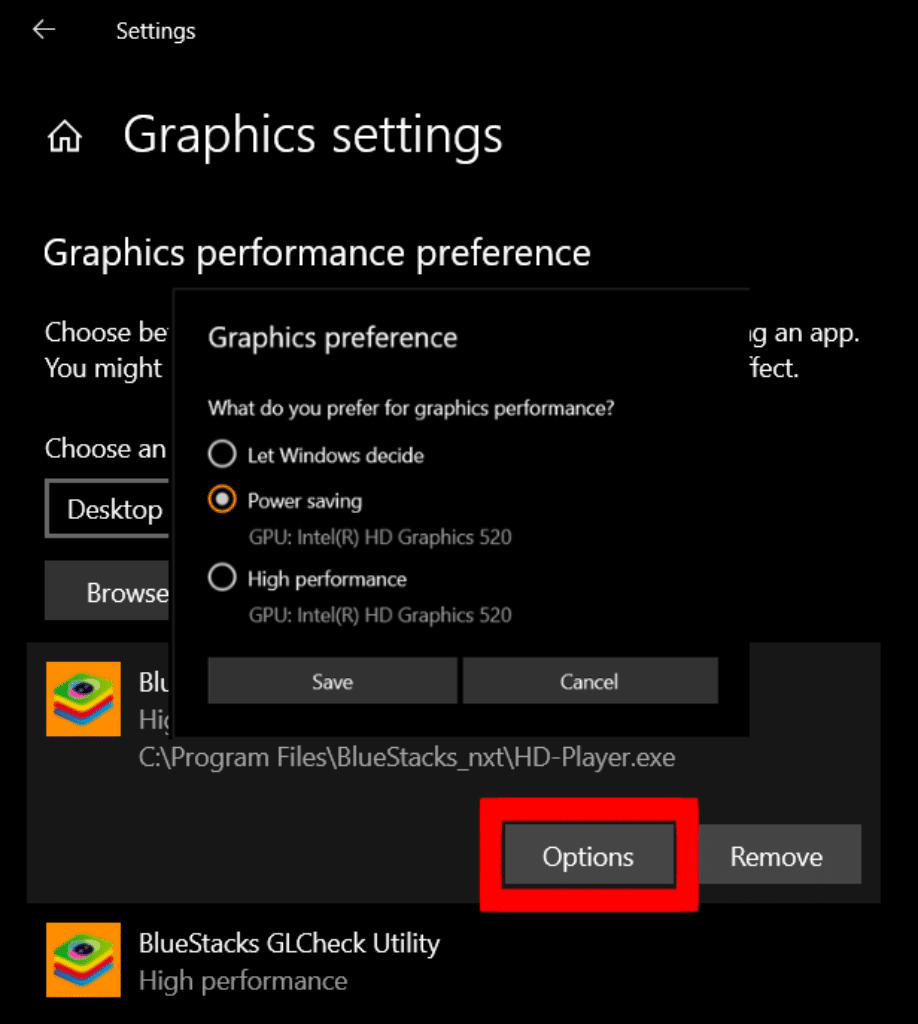
On Windows 10, you can manage your laptop’s graphics settings to conserve battery life. Start by navigating to Settings > System > Display, then scroll down and select Graphics settings. Here, you’ll find a list of apps where you can decide which ones use your power-saving integrated graphics and which ones utilize your high-performance GPU. To do this, select an app, click on Options, and choose either Power saving (for integrated graphics) or High performance (for the GPU). This approach helps your laptop use less battery by dedicating the GPU only to demanding applications.
Windows 11:
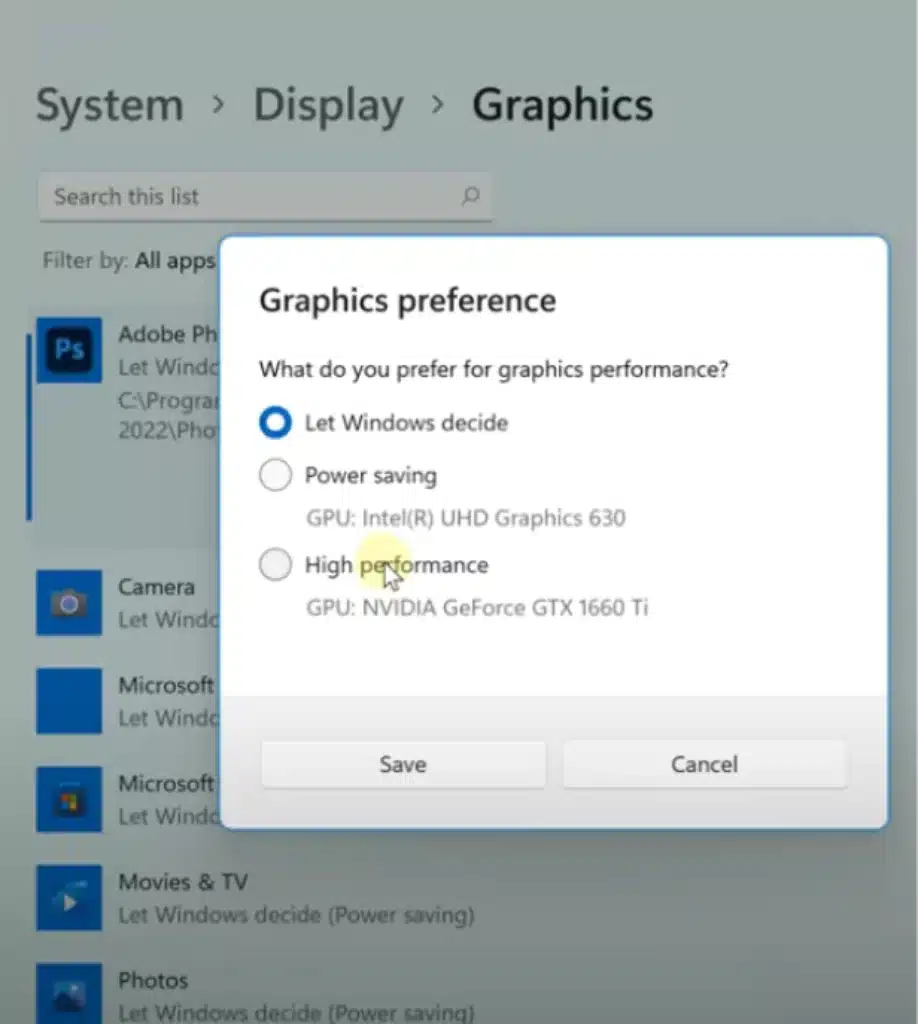
On Windows 11, you can optimize your laptop’s graphics settings to extend battery life. Begin by going to Settings > System > Display, and then scroll down to select Graphics. In this section, you’ll see a list of applications where you can choose whether each app uses your integrated graphics for power saving or your high-performance GPU for demanding tasks. Simply select an app, click on Options, and then choose either Power saving (for integrated graphics) or High performance (for the GPU). This helps conserve battery by ensuring that the GPU is only used for resource-intensive applications.
Keep Your Laptop Cool to Protect Battery Health
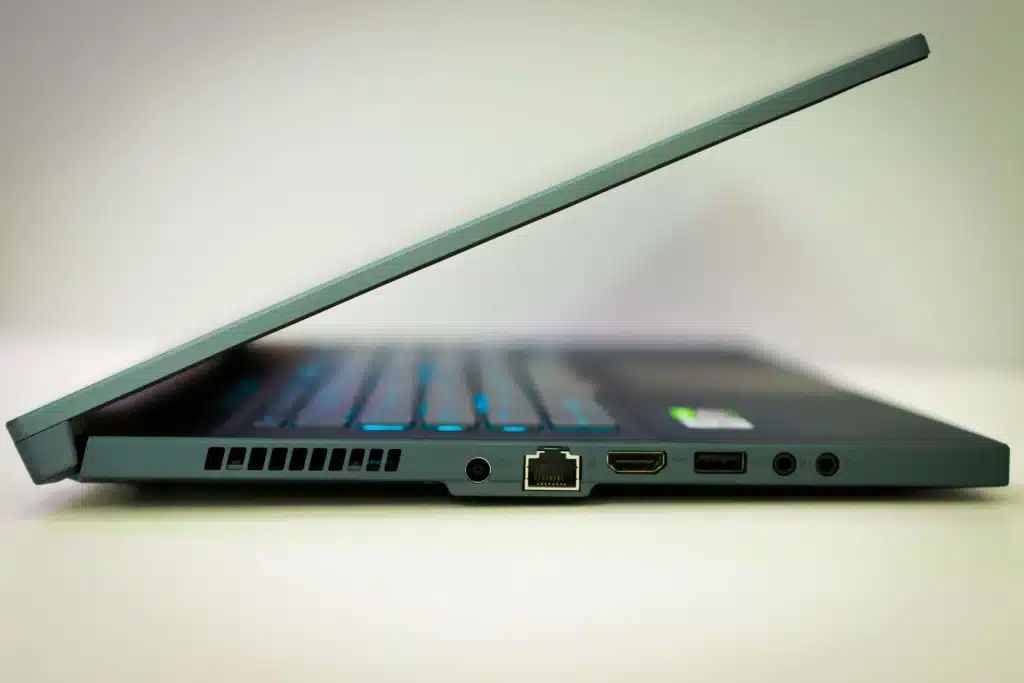
To keep your laptop’s battery healthy, it’s important to prevent overheating. Ensure that the laptop’s ventilation ports are not blocked, as this can cause heat buildup and drain the battery faster. Avoid using your laptop on soft surfaces like beds or couches, which can obstruct airflow. Instead, use a flat, hard surface like a desk. Additionally, regularly clean your laptop’s vents with compressed air to remove dust and debris that can accumulate over time and hinder performance. By taking these simple steps, you can help maintain your laptop’s battery life and overall performance. you can also check our detailed guide on how to fix laptop overheating.
Optimize Display and Sleep Settings for Efficiency
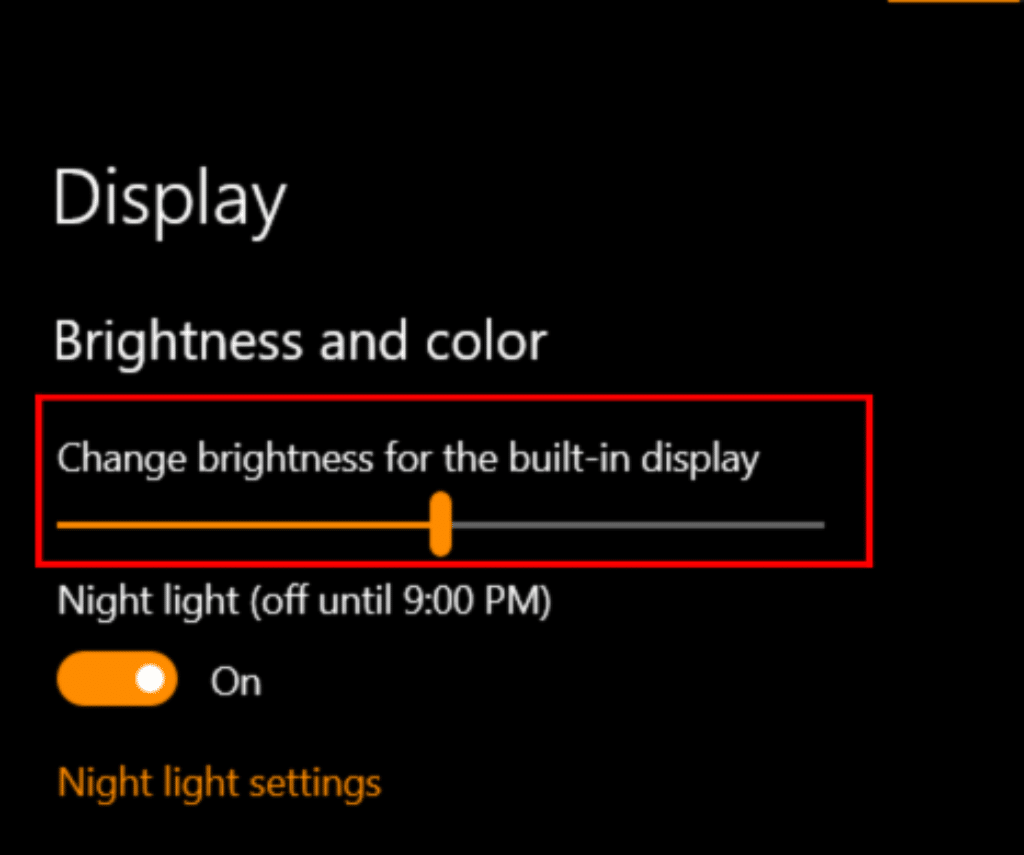
Lowering brightness is one of the easiest ways to conserve battery since the display consumes significant power, second only to the CPU. Dimming your screen to around 50% or less not only extends battery life but also reduces eye strain, making prolonged use more comfortable. This setting can be quickly adjusted through Settings > System > Display or using the brightness slider in the Action Center (Win + A) for both Windows 10 and 11.
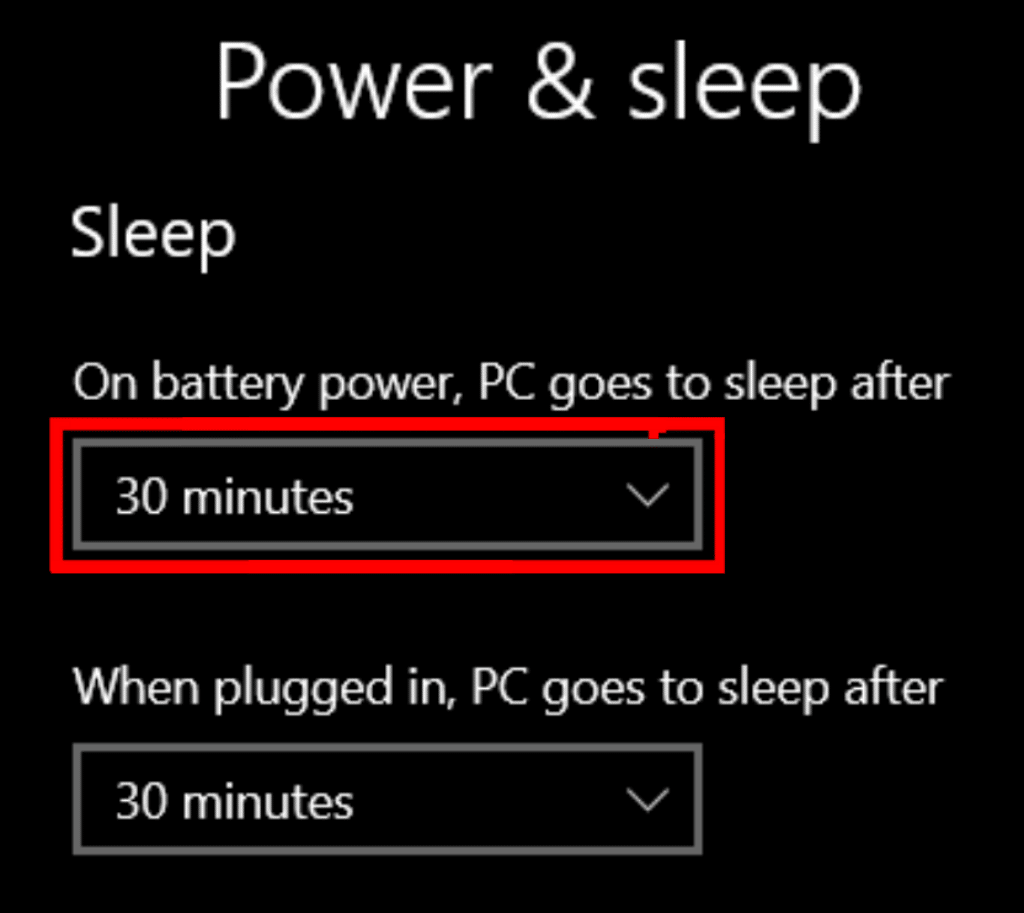
Sleep Mode is another efficient way to save power when your laptop isn’t in use. When activated, sleep mode temporarily powers down most of your laptop’s components while keeping your open apps and data ready to resume immediately. Configuring it in Settings > System > Power & Sleep allows you to set specific times for both screen and system sleep when your device is idle. This feature is especially helpful when you’re moving between tasks or taking breaks, as it conserves battery without requiring a full shutdown.
FAQ’s To Increase Laptop Battery Life:
How can I extend my laptop’s battery life throughout the day?
You can extend your battery life by reducing screen brightness, closing unnecessary programs, disabling background apps, and using power-saving modes. These steps help minimize power consumption and keep your laptop running longer on a single charge.
Does charging my laptop overnight harm the battery?
Modern laptops often have built-in protections to prevent overcharging, but regularly keeping your laptop plugged in can lead to higher battery temperatures, which may degrade the battery over time. Unplugging once it’s fully charged or charging to around 80-90% can help extend battery lifespan.
Is it better to keep my laptop on Power Saver mode all the time?
Keeping your laptop on Power Saver mode all the time can help extend battery life, but it may reduce performance. This mode lowers CPU and graphics power, making it ideal for light tasks like browsing or writing. However, for demanding tasks, you might experience slower speeds. It’s best to use Power Saver for basic tasks and switch to Balanced or High-Performance mode when you need more power. This way, you get a balance of efficiency and performance.
How often should I let my battery drain completely?
It’s generally recommended to avoid frequent full discharges with modern lithium-ion batteries, as it can reduce their lifespan. Instead, try to keep the battery level between 20% and 80% for optimal health.
Can using a cooling pad improve battery life?
Overheating can cause your battery to drain quickly and degrade over time. Using a cooling pad can help maintain your laptop at an optimal temperature, significantly increasing its longevity and performance.







